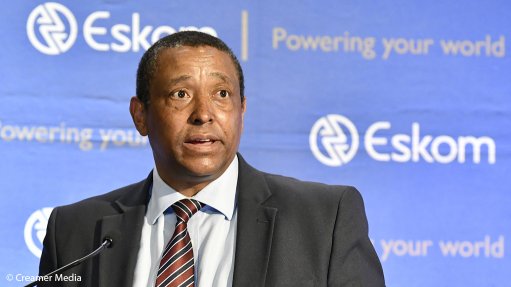Unctad warns of development crisis arising from debt distress in developing countries
Debt distress will result in a development crisis and wider inequalities, with 39 countries paying more to their external public creditors than what they received in new loans, causing an adverse impact on public investments and social protection, the United Nations Conference on Trade and Development (Unctad) has said in its 'Trade and Development Report Update'.
Many developing countries face a deepening development crisis as soaring debt levels and higher servicing costs squeeze productive investment in both the public and private sectors. A shortfall of international liquidity has already turned unforeseen shocks into a vicious financial cycle in some countries.
Over the past decade, debt servicing costs have consistently increased relative to public expenditure on essential services. The number of countries spending more on external public debt service than healthcare increased from 34 to 62 during this period, it highlighted.
To adequately address developing countries’ needs, the financial multilateral agenda requires strengthening, with an urgent focus on the reform of the debt architecture, it said.
“Unctad calls for the establishment of a multilateral debt workout mechanism, a registry of validated data on debt transactions from both lenders and borrowers, and improved debt sustainability analyses that incorporate development and climate finance needs.”
Even if financial conditions stabilise, the slowdown in economic growth in many developing countries combined with the end of the cheap money era points to future rounds of debt distress, it said.
Long-term issues which had emerged after the global financial crisis of 2007 to 2009 and gained greater visibility during the pandemic, namely weak investment, slow productivity growth, supply chain vulnerabilities and high levels of indebtedness, remain in place, it emphasised.
Further, the damage to developing countries from unforeseen shocks, particularly where indebtedness is already a source of distress, will be heavy and lasting. The year ahead will be a challenging one even for those developing countries not in immediate distress. Inequalities within and across countries that emerged with the lop-sided recovery from the pandemic are likely to increase.
“It appears that the year 2023 will test the financial resilience of the post-pandemic world,” Unctad said in its report.
Financial distress in developing countries and private financial institutions in developed countries, heightened by rising borrowing costs, can trigger a crisis that may spread to the real economy through highly leveraged sectors, such as non-financial corporations and real estate.
If central banks in developed countries continue to increase policy rates, losses for holders of existing bonds will mount as will the financial burden for developing countries facing the threat of capital flight and currency declines as they look to rollover their debts, the organisation highlighted.
DEBT & DEVELOPMENT
Like in other developing regions, weaker external demand and tighter financial conditions in Africa have made growth prospects gloomier for the region. Rising global interest rates have triggered significant capital outflows and have further constrained fiscal space, at a time when public finances were already severely affected by costly subsidy schemes aimed at mitigating the adverse effects of high food and energy prices.
Under these circumstances, the risk of stagflation is a key concern for many African economies.
In approximately half of the countries, inflation remained double digits in early 2023. In many instances, these recent inflation spikes relate to the continuing depreciation of several African currencies in early 2023, often following a loss in 2022 of 10% to 30% of their value versus the dollar.
Further, public debt is another worry across the continent. Out of the 38 African countries that are part of the Debt Sustainability Framework of the International Monetary Fund and the World Bank, eight countries are already in debt distress, while 13 are considered at high risk of distress.
Debt has become a major obstacle to development efforts in many developing countries. Most countries prioritise debt payments to avoid a default, even if it means sacrificing development, as can be seen in the evolution of government spending on education, health, and debt service relative to their revenues over the past decade.
External debt service has consistently increased relative to education and health spending for Debt Service Suspension Initiative-eligible countries and other middle-income countries. This key link between debt and development distress highlights the systemic nature of the problem, it highlighted.
“Overall, pressure on developing countries to reduce fiscal deficits is expected to increase, while their role in global value chains is affected by strategic reshoring and 'friendshoring' in the changing geopolitical situation,” Unctad said.
“As countries cut expenditures to free up resources to meet debt payments, pressure on specific public expenditure categories will continue to increase, unless a radically different policy attitude takes over.
“The growing burden of debt, in a context of reduced fiscal space and unreliable liquidity access, is limiting the ability of these countries to respond to shocks and develop their economies. Altogether, these setbacks create a negative feedback loop, resulting in even higher debt burdens.
“Despite the severity of the situation, the multilateral response to the debt and development crisis has been, and remains, too little too late,” it said.
To achieve the Sustainable Development Goals and build a more prosperous and sustainable future, it is crucial to find better ways to address the debt crisis in developing countries. This will require a commitment to transform the global financial system by prioritising the needs of developing countries, Unctad noted.
A well-functioning international financial architecture should facilitate the transfer of resources to developing countries in a way that supports economic development, it emphasised.
Further, apart from being insufficient, the provision of external financing under the current system is procyclical. This can force countries to increase the transfer of resources to their creditors at times when they can least afford it, ultimately leading to debt distress, it added.
Meanwhile, a recent report estimated that sub-Saharan African countries would need to take on an additional $1-trillion in debt in the next ten years without support for loss and damage and adaptation.
As debt distress squeezes public budgets across regions, a new loss and damage finance facility could prevent further rollbacks in development and climate goals but must be supplemented by a broader range of mechanisms, instruments and institutional reforms that can address the systemic challenges facing countries in climate and economic distress.
Comments
Press Office
Announcements
What's On
Subscribe to improve your user experience...
Option 1 (equivalent of R125 a month):
Receive a weekly copy of Creamer Media's Engineering News & Mining Weekly magazine
(print copy for those in South Africa and e-magazine for those outside of South Africa)
Receive daily email newsletters
Access to full search results
Access archive of magazine back copies
Access to Projects in Progress
Access to ONE Research Report of your choice in PDF format
Option 2 (equivalent of R375 a month):
All benefits from Option 1
PLUS
Access to Creamer Media's Research Channel Africa for ALL Research Reports, in PDF format, on various industrial and mining sectors
including Electricity; Water; Energy Transition; Hydrogen; Roads, Rail and Ports; Coal; Gold; Platinum; Battery Metals; etc.
Already a subscriber?
Forgotten your password?
Receive weekly copy of Creamer Media's Engineering News & Mining Weekly magazine (print copy for those in South Africa and e-magazine for those outside of South Africa)
➕
Recieve daily email newsletters
➕
Access to full search results
➕
Access archive of magazine back copies
➕
Access to Projects in Progress
➕
Access to ONE Research Report of your choice in PDF format
RESEARCH CHANNEL AFRICA
R4500 (equivalent of R375 a month)
SUBSCRIBEAll benefits from Option 1
➕
Access to Creamer Media's Research Channel Africa for ALL Research Reports on various industrial and mining sectors, in PDF format, including on:
Electricity
➕
Water
➕
Energy Transition
➕
Hydrogen
➕
Roads, Rail and Ports
➕
Coal
➕
Gold
➕
Platinum
➕
Battery Metals
➕
etc.
Receive all benefits from Option 1 or Option 2 delivered to numerous people at your company
➕
Multiple User names and Passwords for simultaneous log-ins
➕
Intranet integration access to all in your organisation

















